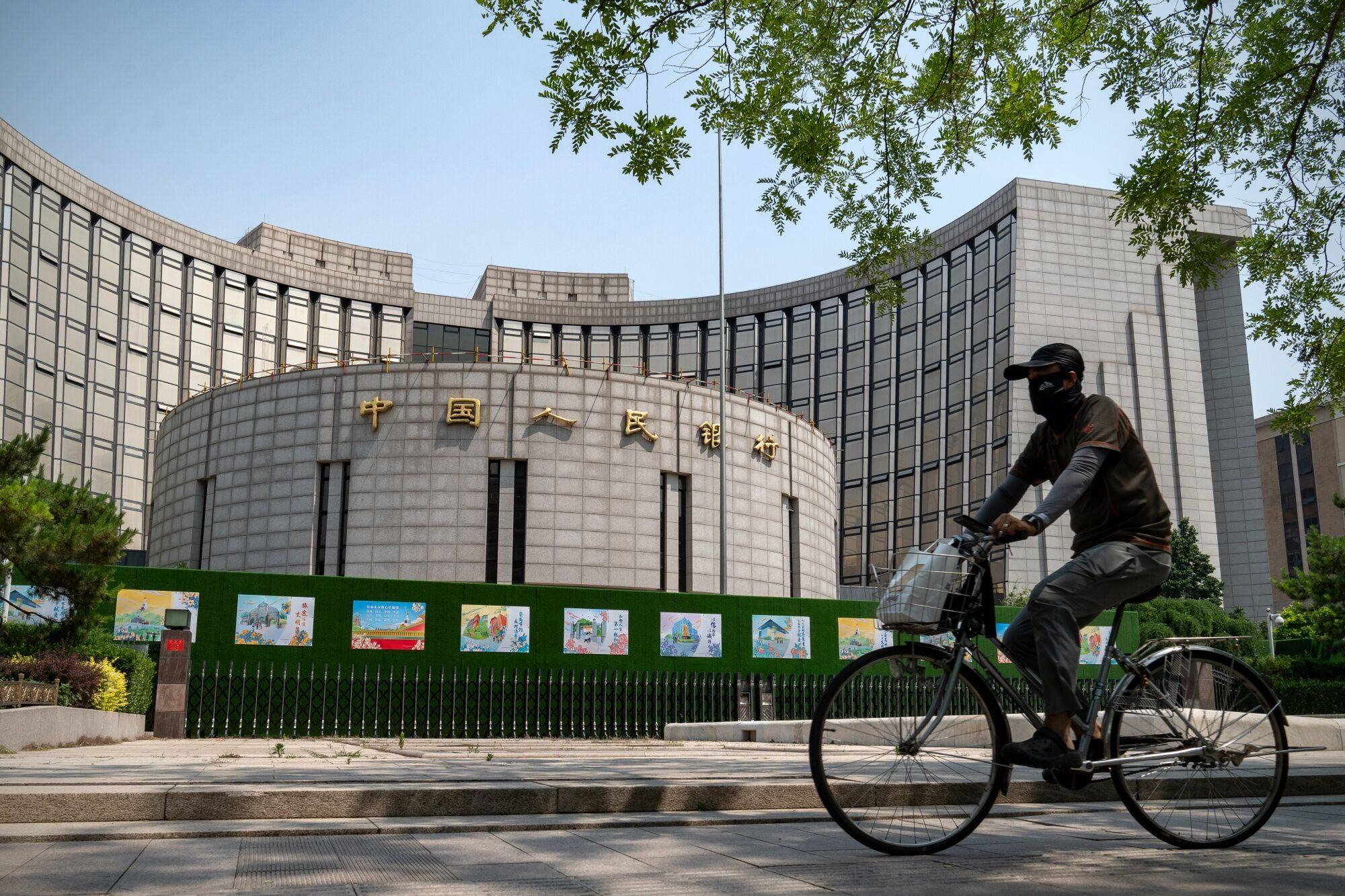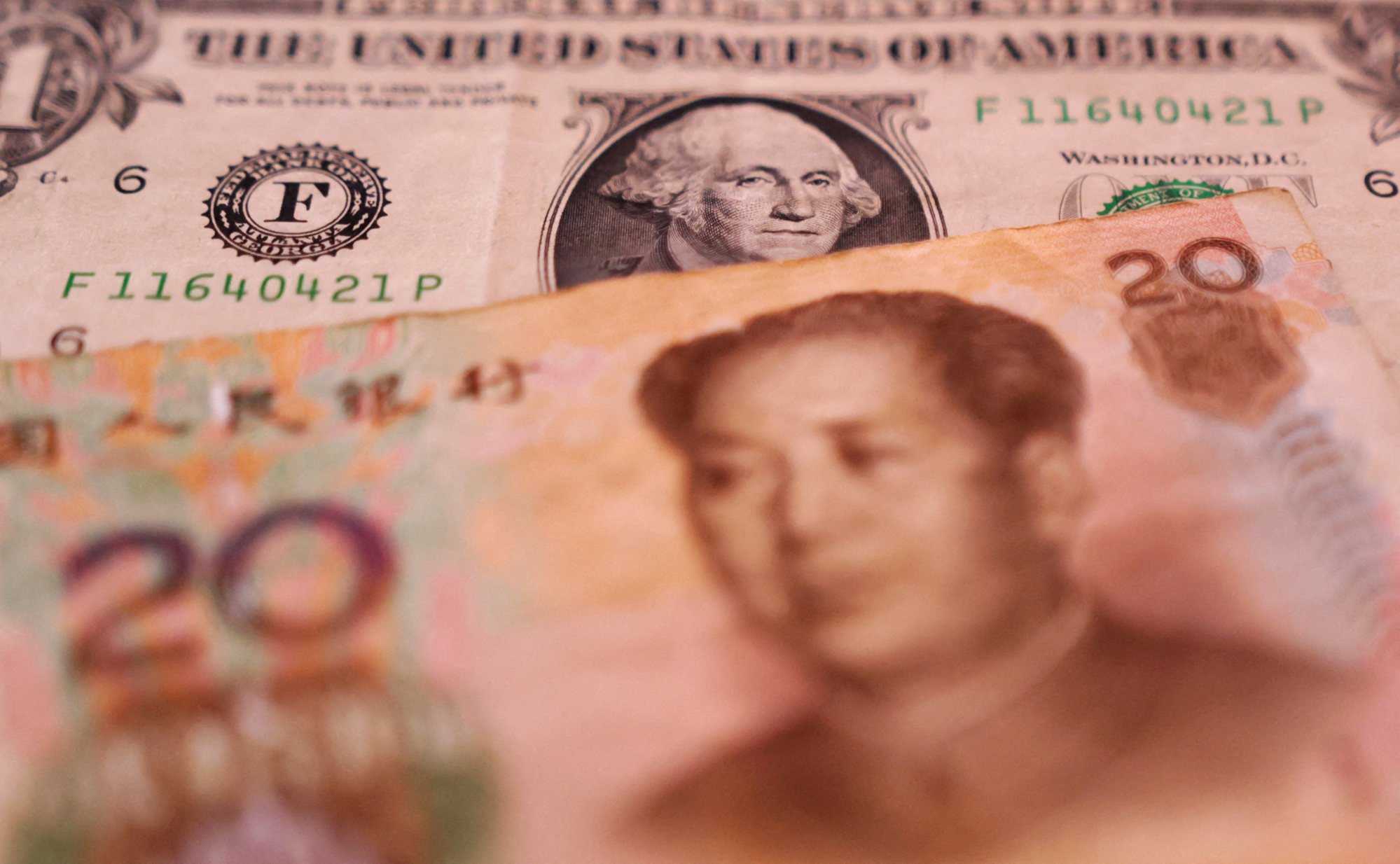China’s cyclical and structural economic woes have put further strain on the yuan. Morgan Stanley notes that China is on course for the longest period of deflation since the late 1990s, with price increases likely to remain below 1 per cent in 2024 and 2025, “far below the 2-3 per cent [levels] we deem as moderate levels of inflation conducive for the overall macro [economic] environment and managing debt-deflation loop risks”.
This puts pressure on the People’s Bank of China (PBOC) to keep loosening monetary policy. This is mainly because of the threat posed by deflation rather than the need to boost exports, which have proved surprisingly resilient this year. China’s real, or inflation-adjusted, interest rates rose sharply last year as prices fell at a much faster pace than average lending rates for households and businesses. In its latest review of China’s economy, the International Monetary Fund noted that financial conditions “remain modestly tight”.
An additional source of pressure on the yuan is the prospect of more tariffs on Chinese goods than the ones already levied by the United States and European Union. The Chinese currency is a key gauge of risks surrounding tariffs and exchange rates, especially given Beijing’s pivot towards a growth strategy focused on high-end manufacturing that relies heavily on exports.
With former US president Donald Trump pledging to hit all Chinese goods with tariffs of 60 per cent or more if he is elected president in November, the yuan could fall more sharply in the coming months. JPMorgan believes “tariff risks look significantly underpriced in [China’s currency markets]”.
This is driving speculation that a big-bang devaluation is on the cards, possibly ahead of the US election. This would allow the yuan to trade more in line with fundamentals. Last month, the PBOC weakened the daily reference rate around which the yuan is permitted to trade versus the US dollar, signalling its tolerance for further weakness.
Yet such speculation belies the delicate balancing act Chinese policymakers are trying to pull off. Faced with a policy trilemma – a concept in economics which posits that a country cannot simultaneously have a stable currency, an independent monetary policy and free capital flows – Beijing has been trying to have its cake and eat it, something that is easier to do by operating a managed floating exchange rate regime.

While this balancing act has become increasingly difficult in recent years, the alternatives are much worse. The last thing China needs right now is a repeat of 2015, when a botched one-off devaluation of the yuan sent markets into a tailspin, triggering heavy capital outflows and forcing the PBOC to burn through US$1 trillion of foreign reserves to stem the exodus.
Neither can a sluggish economy cope with overly restrictive financial conditions. The crisis in the property sector rumbles on, the latest batch of economic data is mixed at best, geopolitical tensions remain acute and the recent stock market rally has petered out because of the perceived ineffectiveness of stimulus measures. Currency-induced constraints in loosening monetary policy are weighing on growth.
Forget about another shock depreciation of the yuan. The question is whether Beijing can engineer a stealth devaluation which allows it to square the circle between having sufficient room for manoeuvre to ease policy and a steady enough exchange rate to safeguard financial stability and avert full-blown currency wars.

It is too soon to say whether China will succeed in having the best of both worlds, or at least some of the advantages. The yuan has lost only about 2 per cent against the US dollar this year, showing how reluctant policymakers are to loosen their grip over the currency.
However, a slow-burn devaluation has begun. A bit of luck in the coming months would not go amiss. A sharper fall in US inflation would allow the Fed to cut rates, easing pressure on emerging market currencies. More green shoots of recovery in China would improve sentiment. Crucially, the re-election of US President Joe Biden would mitigate geopolitical and trade shocks.
This is a tall order. The yuan is likely to remain an unpredictable currency for some time, yet this is why a 2015-style devaluation makes no sense. A gradual, almost surreptitious, depreciation is far more preferable, provided Beijing can manage the tricky balancing act.
Nicholas Spiro is a partner at Lauressa Advisory
Denial of responsibility! Chronicles Live is an automatic aggregator of the all world’s media. In each content, the hyperlink to the primary source is specified. All trademarks belong to their rightful owners, all materials to their authors. If you are the owner of the content and do not want us to publish your materials, please contact us by email – chronicleslive.com. The content will be deleted within 24 hours.

